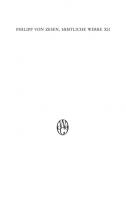Saul Leiter: Early Colour
737 55 9MB
English Pages [168] Year 2013
Recommend Papers

- Author / Uploaded
- Saul Leiter
- Martin Harrison
File loading please wait...
Citation preview
SA
EITE R oe
Earl y Co lor
Digitized by the Internet Archive in 2022 with funding from Kahle/Austin Foundation
https ://archive.org/details/saulleiterearlycOO0Oleit
Canopy, 1958
SAGE
IIB IMER
Ege
(Colheie
With an introduction by Martin Harrison
Steid|
le, |25
Saul Leiter: Early Color
1948-1960
Saul Leiter’s vision is founded on a rapid eye for absorbing spontaneous events. Confronted by a dense web of data, fleeting moments in space and time, he employs an array of strategies — oblique framings, complex intersecting planes
and ambiguous reflections — to distil an urban visual poetry that is by turns deeply affectionate, edgy and breathtakingly poignant. He takes risks — flouting conventions of camera technique and apparently indifferent to the limits of the
light-gathering capacity of emulsions. The photographer of ‘found’ or ‘street’ imagery, as opposed to contrived tableaux, is required to deal with many givens. Yet Leiter’s enframings in Early
Color consistently re-present incidents which may be characterized by their calm introspection as much as by their tension, psychological or otherwise.
He seems to achieve this by a mysterious process of beguilement. Rather than imposing himself on situations he seeps, unobtrusively, into life’s unfolding
dramas; still, today, to observe him at work in Downtown New York remains an education in how photographers can avoid drawing attention to themselves. The origins of the semi-mythological
phenomenon
the ‘New York street
photographer’ may be traced back to coincide closely with Leiter’s arrival in New York in 1946. This moment in New York's cultural history may appear, with hindsight, as a brief, if buoyant, hiatus, before its spirit was partly blunted
by conservative politicians. But Leiter’s sensibility set his photographs apart from
some of the defining characteristics of the putative ‘New York School’ — as typified
by the visceral encounters with the pulse and anxieties of street life familiar from the 1950s imagery of photographers such as Robert Frank and William Klein. Leiter, by contrast, operated in a more reflective, less overtly confrontational mode, seeking out tranquility in the Manhattan
maelstrom.
He transformed
ostensibly banal or unpropitious subject matter into a unique urban pastoral. There were partial exceptions, such as D.A. Pennebaker’s remarkable Daybreak
Express, a valediction to the Third Avenue elevated railroad (the El), and the street photographs of Helen Levitt, but none of his contemporaries assembled a comparably extensive body of work in color. And although Leiter was adept in black and white — indeed in certain formal and technical respects he was
arguably more radical in monochrome — the lyricism of his photographs is most acutely manifested in the eloquent interplay of colors. Among the seminal events that acted as catalysts for New York’s young photographers in the 1940s were the publication of André Kertész’s Day of Paris
(1945) and the Henri Cartier-Bresson exhibition at the Museum of Modern Art (1947). Like the friendship he struck up with W. Eugene Smith, they also served to strengthen Leiter’s resolve, nudging his already strong inclinations toward unconventional ways of seeing. Yet ultimately his interpretations of reality are redolent of the European intimism of the painters Bonnard and Vuillard, artists
he greatly admires, as much as the work of any photographer; he shares, too, the French artists’ inspiration from the asymmetry and radical cropping of Japanese art.
Picture
Frame, Rome,
1959
A specific art-historical analogue that might be proposed here is Vuillard’s pastel
study Le Métro: ‘Station Villiers’ (1917, Musée du Prieuré, Saint-Germain-en-Laye), which translates an essentially modern, industrial subject into romantically delicate washes of color.
Saul was born in Pittsburgh in 1923, son of the internationally renowned Talmudic scholar, Wolf Leiter. He was intended for the Rabbinate, but in the teeth of strong paternal opposition abandoned Cleveland Theological College in 1946 and moved to New York, intending to become a painter. The majority of his paintings explore a fundamentally abstract language of flat planes of color;
to the extent that they contain a representational element it is described in a spontaneous, delicately wandering line, suggestive of here a landscape, here perhaps a figure. Formally, his palette is as expressive as it is unusual, a dialogue
between vibrancy and restraint in a secondary range of hues, from muted violets and mauves to evanescent ochres or yellows. And it will become evident from Early Color that these descriptions are almost equally applicable to the ambiance
of his photographs, as exemplified, for instance, by the spare geometrical underpinning of Mondrian Worker (1954) or the restrained, pastel shades of Tanager
Steps (1952). Soon after Leiter's arrival in New York, his paintings began to be exhibited, mainly in the Lower East Side galleries such as the Tanager Gallery, where they could be seen alongside those of Philip Guston, Philip Pearlstein and Willem de Kooning;
ea,
IP S7
inexplicably, they were never commercially successful, despite attracting the
intermittent interest of influential critics. He was introduced to the abstract expressionist artist Richard Pousette-Dart,
who was experimenting
in the
darkroom with portrait photographs which, as Leiter succinctly described, involved manipulation of the negatives, ‘blown up large, bleached and printed
soft-focus, in the style of Julia Margaret Cameron.’ In one of the paradoxes typical of Leiter’s life, it was, therefore, his friendship with a painter (PousetteDart) that proved to be a significant trigger for his recognition of the creative
potential of photography. Although he has never ceased painting, Leiter’s camera
became — like an
extension of his arm and mind — an ever-present tool, the offbeat chronicler of metropolitan scenes, which occasionally he found in Europe, as well as in the
United States. If his initial essays into photography were exclusively in black and white, to some extent this was dictated by financial considerations. But he was also, as he recalls it, ‘afraid’ of the responsibilities imposed by working in color. Though his trepidation was probably technical rather than aesthetic, whatever the precise reasons Leiter’s position was clearly antithetical to Roland Barthes’s view that color undermined photography’s (arguable) veracity, that it was merely a ‘coating applied later on the truth of the black-and-white
photograph.’ Walker Evans was another figure who, despite his nostalgic attraction to the archaeology of the signs of consumer culture, considered the random
disjunctions of the colors of the city ‘vulgar’; however, Evans’s judgement only
Sign Painter,
1954
serves to emphasize Leiter’s innate sensitivity and selectivity, the transformative power of his imagery, which renders even the most Pop of his ‘found’ raw material (which sometimes extended to the kind of low art subjects dismissed
by Clement Greenberg as kitsch) with anything but vulgarity. It is important to bear in mind that in the late-1940s and early-!950s relatively few photographs, other than those intended for reproduction in magazines or
as advertisements, were made in color. Leiter was faced with two additional problems: not only was the cost of laboratory prints exorbitant, but the exact chemistry of the color process placed limitations on creative control of the final image which acted as a further disincentive. Yet he found ways to circumvent these restrictions — exploiting the color distortions inherent in outdated film stock and embracing the unpredictable color rendition in emulsions available from some of the smaller manufacturers.
His openness to the accidental,
and the willingness to forgo the photographer's legendary control. are crucial components of Leiter's ethos, anticipating precepts that remained exceptional,
even among photography’s avant-garde, until the advent of postmodernism in the 1970s. Several factors conspired to delay recognition for Leiter’s vast body of non-
commercial photographs, among which, it must be admitted, was an enigmatically subversive streak, combined
with a measure
of disdain for self-promotion;
together with a solid artistic integrity, these tendencies were liable to be
misinterpreted, and almost invariably were. Improbably, his late friend, the art director Henry Wolf, called him ‘Snappy’, but in the context of this serious reappraisal it would be misleading not to mention Leiter’s sense of humor, the
slow, gurgling laugh that accompanies a joke — frequently self-deprecating — or
the withering rejection of a pretentious remark. Although Edward Steichen exhibited some of Leiter’s color photographs in a group show, Always the Young Stranger, at the Museum of Modern Art in 1953, for forty years afterwards they
remained virtually unknown to the wider art world. Several decades elapsed before all but a tiny proportion of these early transparencies was realised in
print form. Significantly, their only other ‘public’ viewings in the 1950s had been on the occasions when Leiter projected them in his East |Oth Street studio,
sometimes for the benefit of a few invited friends: thus, half-a-century ago his guests had been privileged participants in what might later have been termed a performance event or an installation.
Shopper (1953), Walking (1956), Cracks (1957), and indeed most of the images in Early Color, render color and motion in semi-abstract free-form — fluid, improvisational. Reflected figures dissolve into elegiac blur, shifting in focus, intangible, lost in time. The evocative, painterly images on these pages vividly demonstrate that in the second half of the twentieth-century Saul Leiter’s
photographic language of fragmentation and contingency was extending the boundaries of the medium.
Martin Harrison, July 2005
Dog in Doorway
Paterson, 1952
cape SRE
Se
Si ¥
. ‘
Shoeshine
(O56
Satin
Street Scene
[953
Barbershop
195 |
Haircut
1956
Bus, New York
1954
Reading
1950
Street Scene, New York
1958
Oy
Reflection
1958
Walking
1956
Shopper
53
Snow
Scene
1960
Spain
p52
Man Reading
ey
Hat
1956
Near the Tanager
Ss
Foot on
1954
El
. +
¥
ag
: «
i
Es
F, 7 E
ry
we
A
>
~
f
‘ ~
+
-
:
= -
:
iS
oe
el i
=
aa
=
;
a
a
ba a, =a=
On the El
1958
Phone
1957
Call
#
rostaconconaniconaciing
iit
scien
Harlem
1960
Taxi
1956
Mondrian Worker
1954
Yellow Scarf
1956
1956
Giaeks
[957
Kutztown
1948
1950
White
Circle,
1958
Window
Dresser,
1956
Worker
1956
Chauffeur
[S55
Painting
[955
Woman Waiting
eas
Street Scene
(DS7
Fire Hydrant
Sy
Man
on Ladder
|954
Through Boards
au
Seeds
1954
Tanager Steps
952
Pizza Paterson,
1952
Don't Walk
[952
Parade
1954
Red Umbrella
[SSI
Festival
1954
Newspaper Kiosk
SS
Seamstress
952
Postmen
S52
Snow Window
(O59)
Red Umbrella
Sy 7/
Red Lights
[D357
Snow
Scene
1958
Coachman,
1957
Kutztown,
1948
Shirt 1948
panes TES eee
Looking Down
5s
Window
Sy:
Street Scene
O59
Snow
1960
Rome
1959
ee
Sec
eal
Waiter
Parise So
Paris
Se
Times Square Mosaic
1950
Paris Lovers
1959
Sign Painter
ea)
Lanesville
1958
Harlem
1960
Walk with Soames
1958
Horse
1958
Limousine
1958
Tanager Stairs
54
Hat
1958
White Brooklyn, 1949
Soames,
England,
|97|
ery
First edition 2006
Second edition 2007
Third edition 201 | Fourth edition 2013 Design: Martin Harrison
Design production: Tony Waddingham Scans by Steidl’s digital darkroom Production and printing: Steidl, Géttingen Copyright © 2013 Saul Leiter for the images Copyright © 2013 Martin Harrison for the text Copyright © 2013 Steid! Publishers for this edition
Steid| Diistere Str 4 / 37073 Gottingen, Germany
Roney
4 ol55-47
CONGO) raat 4+o Sol-49 60N649
E-mail: [email protected] www.steidiville.com
/ www.steidl.de
ISBN 978-3-86521-139-2 Printed in Germany by Steidl
Public
Library
VAT) 0 01 00 7976954 2
4“
Printed in Germany
by Steid Sates
8









